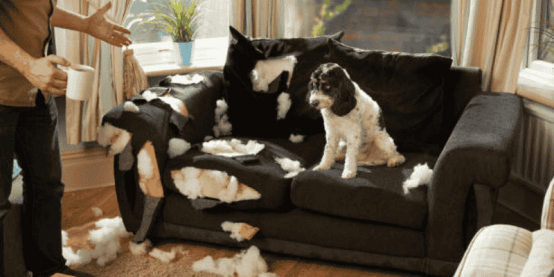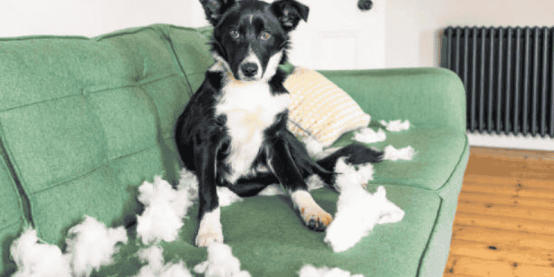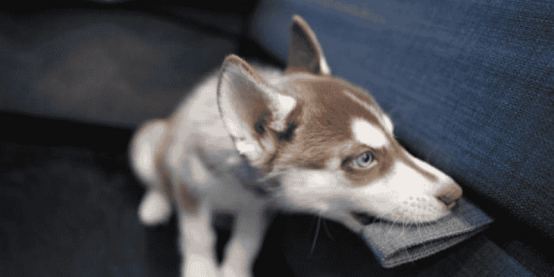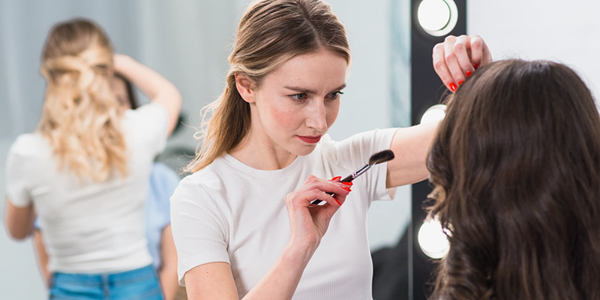Pets
How To Stop Your Dog From Biting Furniture (Works Fast!)
I was over the moon when my golden retriever puppy, Luna, first came home. She had the energy of a fluffy little plaything. But within days, my thrill became panic. My couch looked as if a beaver had attacked it. The legs of my wooden table were a mass of bite marks. Not even my favourite shoes were safe. I felt lost. Why was she doing this? How could I make it stop?
I was over the moon when my golden retriever puppy, Luna, first came home. She had the energy of a fluffy little plaything. But within days, my thrill became panic. My couch looked as if a beaver had attacked it. The legs of my wooden table were a mass of bite marks. Not even my favourite shoes were safe. I felt lost. Why was she doing this? How could I make it stop?
After weeks of trial and error — and a lot of chewed-up furniture — I had finally determined what works. Today, Luna's teeth remain where they should: in her toys. Here's what I learned if you're dealing with such a furry furniture destroyer. These steps helped me, and they will help you, too.
Why Dogs Chew Furniture (And Why It’s Not Their Fault)
Before getting to the why and how-to solutions, let's explore why dogs chew. Puppies experience the world through their mouths, as a human baby uses its hands. To younger dogs, chewing relieves teething pain. Older dogs may chew out of boredom, anxiety, or mere understimulation. Sometimes, it's a call for attention. The trick is to change the behaviour but solve what is happening at the root.

Step 1: Feed Them Something Better To Chew
The quickest way to break your dog's habit of biting furniture is to provide ample safe chew toys. However, not all toys are created equal. Luna initially ignored rubber toys, so I tried something different.
Experiment with different textures. Some dogs like soft plush toys, while others prefer hard rubber or nylon bones.
Frozen treats: Stuff a Kong toy with peanut butter and put it in the freezer. The cold is nice on their aching gums, and the challenge gives them something to do.
Rotate toys: Change them up by rotating them every few days. A "new" toy might wear a reward disguise.
I saw Luna chew slowly the second she understood her toys delivered more to her than my couch.
Step 2: Make Furniture Unattractive (The Secret Sauce)
If your dog nibbles in specific areas, make them taste bad. I used a simple spray that worked like a charm.
Apple cider vinegar solution: Combine 1 part vinegar and five parts water in a spray bottle. Spray trace your furniture after testing a small area first. The smell and taste prevent mastication.
Bitter sprays: Non-toxic deterrents like bitter apple spray are sold in pet stores. Use it on the edges or legs of furniture.
The first time Luna attempted to bite the couch, post-spray, she grimaced and backed away. A few applications, and she learned quickly.
Step 3: Introduce The “Leave It” Command
Training is your not-so-secret weapon. The “leave it” command has saved my shoes countless times. Here’s how to teach it:
Close your hand around a treat.
Allow your dog to smell and swat your hand.
Use a calm but firm voice and say, "Leave it."
If they give up, reward them with a different treat.
Practice this daily. Gradually use the command when they get near furniture. It was hard to overstate the importance of consistency—I practised with Luna every morning and evening.
Step 4: Tire Them Progressively (Mentally And Physically)
A tired dog is a happy dog. When she had excess energy, Luna’s chewing increased.
Walks: 30 min — 60 min of exercise. Even a quick walk around the block will do.
Puzzle toys: These help keep dogs mentally stimulated. Hide treats in a snuffle mat or a puzzle feeder.
Playtime: A few rounds of fetch or tug-of-war can be exhausted quickly.
Instead of chewing, Luna would take a long nap. Coincidence? I think not.
Step 5: Carve Out a Chewing-Free Zone
If the dog is alone or stressed, it may chew furniture. Create a comfortable place — a nook or spot where they feel safe.
Crate training: Some dogs like a small, den-like space. Put in some soft bedding and a few toys.

Designated area: Block off rooms with baby gates. Place their bed, water, and toys in a puppy-proof space.
I kept Luna's crate in the living room so she wouldn't feel cooped up. There, she discovered how to chill rather than roam (and ruin).
Step 6: Working To Combat Anxiety Or Boredom
If your dog chews when you're gone, they may be anxious—signs such as whining, pacing, or shredded items near doors/windows.
Desensitize departures: Leave the house — for five minutes at first, then longer—reward calm behaviour.
Calming aids: Consider pheromone diffusers or calming collars. They mimic natural aromas that calm dogs.
At first, Luna hated to be alone. I left her a lavender-scented toy, and eventually, her puppy separation anxiety subsided.
Step 7: Puppy-Proof Your Home
As they say, prevention is better than cure. The fewer pieces of furniture to chew on, the less your dog will chew!
Apply bitter sprays: Reapply deterrents once a week or after cleaning.
Furniture coverings: To protect fabric, use throw blankets or slipcovers. They're simpler to wash than your couch.
Shut: Keep rooms tempting to your pet closed until their habits are better.
During training, I covered my couch with old sheets. It wasn't stylish, but it protected my furniture.
Step 8: Do Not Punish You Need To Redirect
Shouting or scolding will only worsen chewing. Dogs don't associate punishment with something they did 10 minutes ago — they feel scared.
If you spot your dog in the act:
Calmly say “Ah!” or “No.”
Offer a toy immediately.
All positive reinforcement when they move to the toy.
I always carried a toy in my pocket for such moments. Luna realized that chewing on the "right" thing got her attention.
Step 9: Stay Consistent
This is the hardest part. Dogs thrive on routine. Do it once, and they’ll think it’s fair game.
Bring everyone on board: Ensure all family members abide by the same rules.
Track progress: Write down when and where the chewing happens. Make any necessary adjustments to your strategy.
Luna took around three weeks to quit entirely. There were failures, but consistency won.

When To Call a Professional
Many dogs become better with training, but some require additional attention. If your dog is an aggressive chewer, won’t respond to commands or suffers extreme anxiety, consult a vet or certified trainer. They can eliminate factors and handle a specific plan.
What To Do To Protect Your Home In The Future
Preventing furniture nibbling isn't overnight, but give them some time with the right tools, and you'll get there. If so, I recommend starting with 2–3 from this list. Stick with them, and your home and sanity will be secure soon.
Keep in mind: Your dog isn't "being bad." They're just being a dog. You will both be happier with care, training and a little ingenuity. Now, give your puppy a toy and enjoy your chew-free couch!



